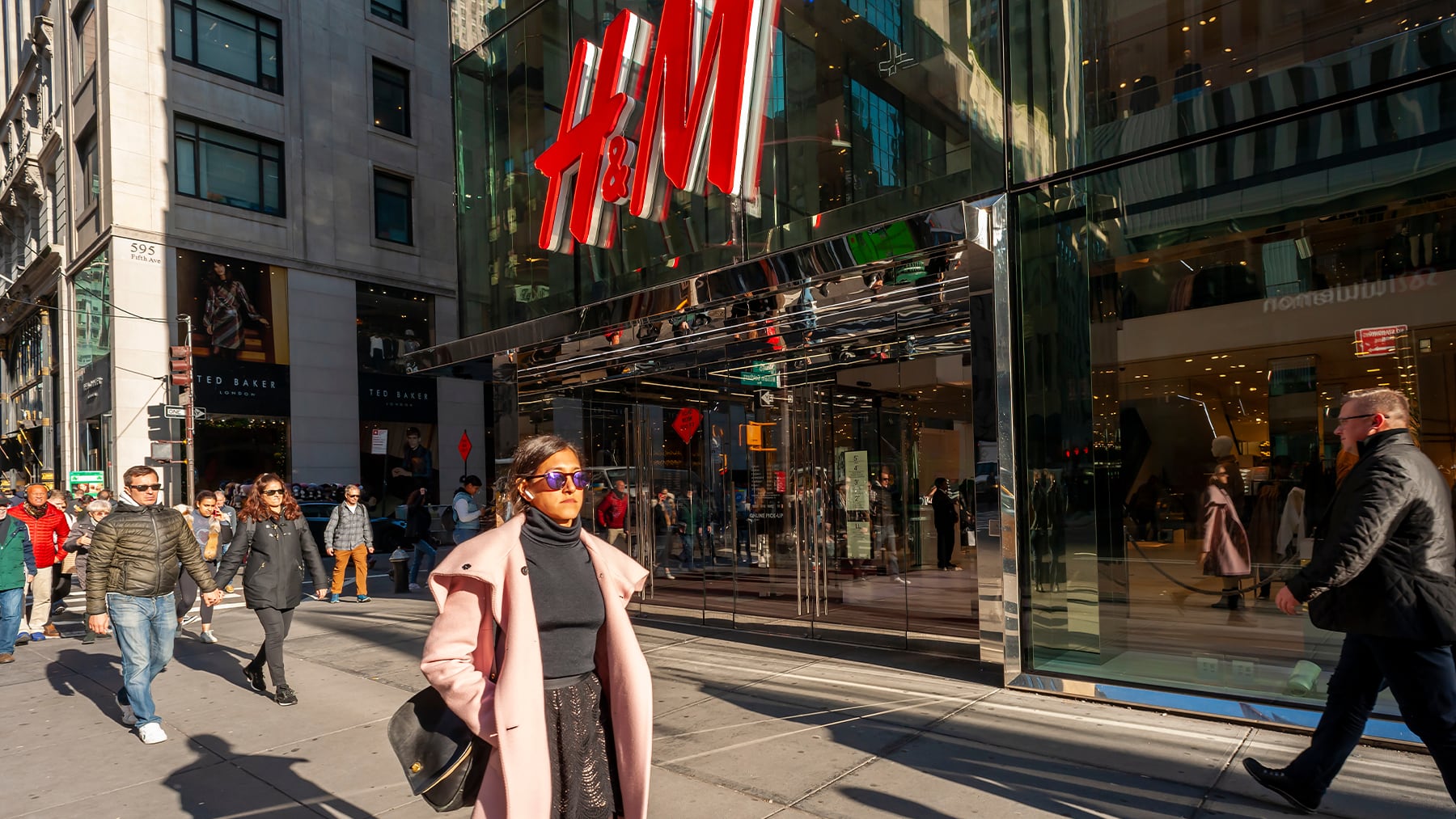
Amid a decade-long bid to regain dominance in the fast fashion space, H&M named a new chief executive Wednesday morning, replacing Helena Helmersson with Daniel Ervér, an 18-year veteran of the business who most recently helmed its marquee brand.
Ervér has his work cut out for him. The Swedish chain pioneered the fast fashion model decades ago, but is now caught in a Goldilocks dilemma with its two biggest competitors, Inditex-owned Zara, which has captured the upper end of the category, and Shein, the Chinese behemoth that specialises in ultra-fast, ultra-cheap trendy ware. H&M is neither perceived as premium as Zara — and therefore cannot command the same high prices — nor is it the most affordable option; Shein and Temu offer in-season tops and accessories at a fraction of the retail price of H&M.
What’s driving its weak market position is a slate of operational shortcomings, analysts say, which H&M has not been able to turn around under Helmersson, who stepped into the top role in 2020. Like Ervér, she joined H&M early on in her career as a budget controller in the buying office in 1997. She was the first CEO who wasn’t a member of the founding Persson family, who have always favoured internal candidates for top management roles even as investors have pushed for new, outside perspectives.
The CEO role “has been very demanding at times for me personally,” Helmersson said in a statement, “and I now feel that it is time to leave the CEO role, which of course has not been an easy decision.”
Helmersson’s exit was reportedly more than a year in the making, according to sources familiar with the company. In a call with reporters, Ervér said he put his hand up for the role in December.
The move was not viewed favourably in the market. H&M shares fell 11 percent on Wednesday.
“H&M has the wrong products with the wrong pricing in the wrong channels,” said William Woods, an analyst at Bernstein. “They should’ve looked for an external candidate for this role, given that H&M needs fresh ideas.”
In the last decade, H&M’s operating margin, a measure of profitability, has dropped from 20 percent in 2010 to 3 percent in 2022. Last year, it lifted that metric to 6 percent, but net sales in the fourth quarter fell 4 percent year-on-year, the company announced in its earnings report Wednesday. Sales for the full year fell 1 percent, to SEK 236 billion, or $22.8 billion. Sales between Dec. 1 and Jan. 29 also fell 4 percent.
In recent years, the retailer has prioritised boosting profitability by closing stores and cutting operational costs, but these measures have not resulted in a turnaround. In order to successfully compete for the attention of young consumers today, it may be necessary for H&M to radically transform its business model, from the way it designs products to how those products are sold.
Macroeconomic headwinds will further strain H&M’s prospects in 2024. In December, Deutsche Bank analyst Adam Cochrane downgraded both H&M as well as Inditex to a sell rating, citing slower post-pandemic spending.
Like many struggling fashion brands, H&M’s problem begins and ends with product. In a crowded landscape of affordable mass retailers, from Abercrombie & Fitch to Primark, H&M’s merchandise misses on both quality and trendiness, according to Woods.
Whereas Shein and Inditex are extremely nimble in their supply chains through a test-and-react approach, H&M’s initial orders are larger and its lead time is far longer because of its internal design process.
Shein and Inditex are in the business of copying trends through data, Woods said, and are able to deliver the products to consumers much faster via factory-to-consumer shipping and the use of air freight, respectively. H&M, on the other hand, takes a view on fashion each season, which is always a gamble.
While H&M can create considerable demand for its high-profile designer collaborations — the most recent of which was Paco Rabanne — these tie-ups have minimal halo effects on its core assortment.
With a younger customer demographic, H&M has had less wiggle room in charging higher prices. But even with substantial increases since last year, the retailer can’t afford air freight like Inditex and must ship its products by sea, which means its styles don’t hit the shelves until months after they’ve been created.
“Zara’s lead time is somewhere between three and 12 weeks, and I reckon H&M’s is probably closer to 6 months,” Woods said.
It’s a catch-22 for the retailer, which can’t afford to lower prices either to better compete with Primark and Shein. Its margins — as well as brand perception — are further eroded by frequent discounts, which are difficult to avoid with a supply chain model of ordering deep on a smaller assortment relative to its peers. Opting for depth over breadth of styles is always a bigger gamble, Woods added.
The Wrong Channels
Finally, H&M simply has too many stores. In the Denver area for instance, there are five H&M locations to one Zara. And even though Inditex has a larger footprint overall, its average sales per square metre is more than triple that of H&M: €5,476 in 2022 versus €1,484, according to a Bernstein note published in June.
H&M has made strides in culling its retail fleet. Earlier this week, it announced it would close 28 stores in Spain. Even so, the rate at which the company is trimming its footprint is not aggressive enough, Woods said.
But H&M has promising components of growth too. In its earnings call Wednesday, Helmersson highlighted the company’s gross margin expansion in the fourth quarter as well as the fact that it’s on pace to reach an operating margin of 10 percent in 2024.
As for product design, she said H&M has continued to make investments in tech and AI, which has resulted in “improved size availability, faster response times and increased precision in product purchasing, giving customers access to an even broader and more relevant assortment.”
Its portfolio of smaller brands also offer a strong glimmer of hope for the retailer; this segment of the business, which includes the brands COS, Monki, Weekday, & Other Stories and Arket, grew 9 percent in 2023.


